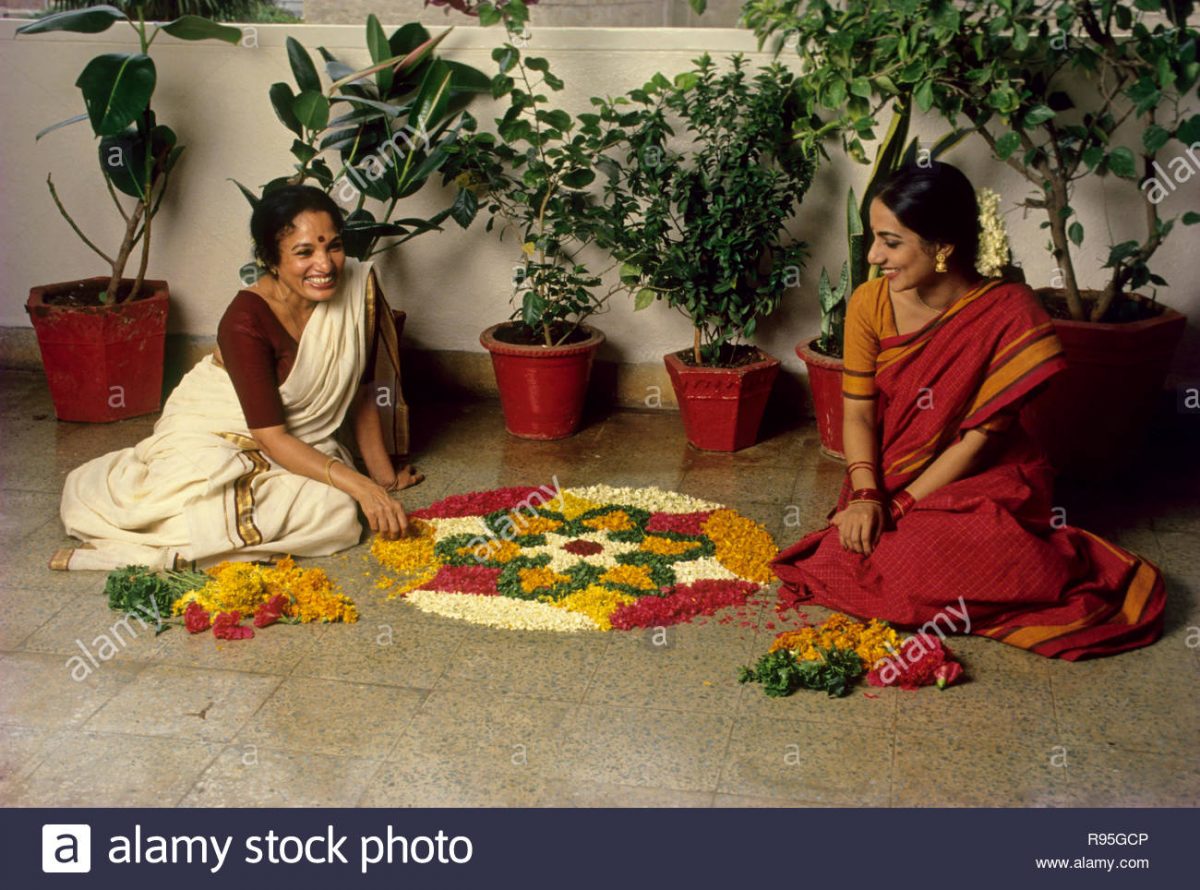ॐ श्री गुरुभ्यो नमः ॐ श्री शिवानन्दाय नमः ॐ श्री चिदानन्दाय नमःॐ श्री दुर्गायै नमः
Source of all Images in this Blog-post : Google Images : ‘Google Image Search’ will reveal the multiple sources of every single image shared here. For more details, kindly see ‘Disclaimer‘
Pookalam is an intricate and colourful arrangement of flowers laid on the floor, using multifarious vibrant colors and lovely fresh flowers. Tradition of decorating Pookalam is extremely popular in Kerala and is followed as a ritual in every household during ten-day-long Onam celebrations.

‘Pookalam’ consists of two words, ‘Poov’ meaning flower and ‘Kalam’ artwork. It is considered extremely auspicious to prepare Pookalam in front of the house, during the festival of Onam in Kerala.
People believe the spirit of their dear King Mahabali visits Kerala at the time of Onam. Ladies, especially adolescent girls, prepare elaborate Pookalams to welcome their most beloved King during this 10 day festival.


Each Pookalam design is designed and decorated with utmost perfection. All these designs, some of them really large, carry their own uniqueness and opulence and add charm to the place when completed impeccably.
Given below are some of the exclusive and eye-catching Pookalam Rangoli designs, with breathtaking finishing using bright colours. Small Diyas (Oil-Lamps) are also placed on the outer borders of Pookalam, which adds even more beauty to the design.





Rangoli is considered very auspicious in every region of India, due to which it is an inevitable part of every Hindu festival everywhere in India.
Rangoli is an art-form, originating in the Indian subcontinent, in which patterns are created on the floor or the ground using materials such as colored rice, dry flour, colored sand or flower petals.
It is usually made during Diwali or Tihar, Onam, Pongal and other Hindu festivals in the Indian subcontinent. Designs are passed from one generation to the next, keeping both the art-form and the tradition alive.
The purpose of Rangoli is decoration, and it is thought to bring good luck. Design depictions may also vary as they reflect traditions, folklore, and practices that are unique to each area.
It is traditionally done by girls or women. Generally, this practice is showcased during occasions such as festivals, auspicious observances, marriage celebrations and other similar milestones and gatherings.
In Kerala ‘Pookalam’ or the flower Rangoli marks the beginning of local festival of Onam.
On the very propitious celebration of Onam, Malayalee families all over the world decorate the entrance of their home with fresh flowers and vibrant colors.
Traditionally the dyes for the Pookalam were derived from natural sources like indigo, barks of trees, vermilion, rice flour, turmeric and so on. These days synthetic dyes are more in use and have become very popular.
